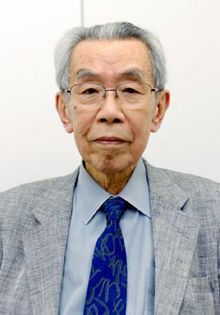Native name 土居 健郎 Name Takeo Doi | Role Author | |
 | ||
Occupation Academic, psychoanalyst, author Died July 5, 2009, Tokyo, Japan Books The Anatomy of Dependence, The Anatomy of Self People also search for Bin Kimura, Yomishi Kasahara, Hisao Otsuka | ||
Takeo Doi (土居 健郎, Doi Takeo, March 17, 1920 – July 5, 2009) was a Japanese academic, psychoanalyst and author.
Contents
Early life
Doi was born in Tokyo, Japan in 1920. He was a graduate of the University of Tokyo.
Career
Doi was Professor Emeritus in the Department of Neuropsychiatry at the University of Tokyo and a medical adviser to St. Luke's International Hospital in Tokyo. He was also Director of the National Institute of Mental Health in Japan. He taught at the University of Tokyo (1971-1980) and at International Christian University (1980-1982). He wrote numerous books and articles both in Japanese and in English.
Doi was best known for his influential explanation of contemporary Japanese society in the work The Anatomy of Dependence, published in 1971, which focused extensively on amae inner feelings and behaviors that show individuals innate desires to be understood and taken care of—as a psychoanalytical concept and theory. The Anatomy of Dependence was described by Harvard professor emeritus Ezra Vogel as "the first book by a Japanese trained in psychiatry to have an impact on Western psychiatric thinking." Others critiqued Doi's theories as merely a variety of nihonjinron.
In 1986, Doi published a further book, The Anatomy of Self, that expanded on his previous analysis of the concept of amae by a deeper examination of the distinctions between honne and tatemae (inner feelings and public display); uchi (home) and soto (outside); and omote (front) and ura (rear) and suggests that these constructs are important for understanding the Japanese psyche as well as Japanese society.
Doi died aged 89 in 2009.
